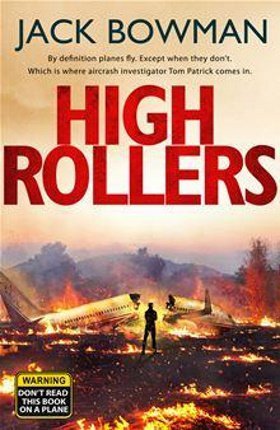The blonde was still near by, he was embarrassed to note.
A narrow, weather-beaten man in a tuxedo, with a tag reading ‘Manager’, appeared at his elbow and spoke to the medic. ‘He okay?’
‘He will be. The cut above his eye needs stitching.’
‘Okay. I’ll take it from here.’
The medic hesitated. ‘You’ll have to sign off on that, sir.’ The manager said okay, and Lis fetched a clipboard. Tom watched dully as the guy signed for him like a pound puppy, then asked Tom to follow him. Tom straightened with difficulty, clamped the ice to his groin and managed to walk after him with only a hint of a limp and a pained expression. The blonde caught his arm. ‘I’ll wait here for you.’ He nodded, wondering why.
The manager walked slowly so Tom could keep up. The dealer walked behind him with his winnings.
‘Would you like us to cash that up for you, sir?’
‘Please.’ The dealer peeled off.
By the time they reached the door marked ‘Manager’, Tom’s head was clearing and the ache in his balls was bearable.
Inside, two burly security guards with buzz-cuts stood at either side of the leg-shaker, who glared at him, chin and crotch thrust forward belligerently. The manager sat behind his desk and motioned to a chair. ‘Sit, please.’
Tom adjusted the ice bag he held over his balls. ‘I think I’ll stand, thanks.’ The manager nodded his understanding.
Tom noticed a CCTV camera in the corner above the desk. Behind him the dealer came in and handed him his money in a thick roll.
‘Thanks.’
‘You’re welcome,’ she said nervously.
The manager asked her what had happened and the dealer gave a brief and accurate account of what had taken place. The only defence the leg-shaker could muster was that Tom was ‘a fucking wise-ass’. He didn’t even look as though he’d convinced himself.
The manager sighed and addressed Tom. ‘Mr …?’
‘Patrick.’
‘Mr Patrick, I am Robert Tarryk, the manager. I can only apologize for the assault you have suffered at the hands of another player. My security staff stepped in quickly but I’m afraid when these things happen they happen very fast, as you’ll appreciate. I do hope it has not put you off returning to the Honolulu.’
Tom shrugged noncommittally. ‘Have you called the cops?’
He saw the look Tarryk gave the leg-shaker. ‘Not yet. I thought I would let you decide how to deal with this.’
Tom was caught off-guard for the second time in five minutes. He gave Tarryk a questioning look.
‘Obviously we like to maintain our image as a desirable addition to the neighbourhood, Mr Patrick, and for that reason we prefer to handle things without recourse to the law whenever possible.’
Tom’s interest was sparked now. He dabbed at his eyebrow with the towel and waited Tarryk out.
‘If, for example, Mr Stanley here …’ Tom glanced at the leg-shaker ‘… was prepared to make some kind of reparation?’
Stanley didn’t react. Tom didn’t react. Tarryk tried again. ‘For instance, how does two thousand dollars sound?’
This time Tom couldn’t hide his surprise. Tarryk was offering to pay him off.
‘I don’t want your money. He’s the one who stomped on my balls.’
‘And I’m sure Mr Stanley sincerely regrets it.’
Tom glanced at Stanley: he didn’t look sincere or regretful as he shot a glance of suppressed fury at Tarryk. But it dawned on Tom that that was what would make him feel better: an expression of sincere regret on Stanley’s face.
‘We’re all reasonable people. I’m sure we can work this out, Mr Patrick.’
Tom hesitated, then said slowly, ‘I’m sure we can.’
‘Good. So, two thousand, then?’ He opened a cheque book.
Without warning, Tom turned and kicked Stanley straight in the balls. As with the perfect golf swing, everything fluked into place, and when he connected, he felt the power of the strike right up to his teeth. He thought Stanley actually left the ground, but he couldn’t be sure.
‘Yo!’ one of the security guards shouted in surprise and, behind Tom, the dealer squeaked.
Stanley dropped as if his legs had been cut off. Tom watched him try to breathe, making a painful, high-pitched sound as he rolled gently back and forth on the carpet, clutching himself. Tears squeezed out of his tightly shut eyes and his gritted teeth were stained with blood from his bitten tongue. Tom figured that was as close to a look of sincere regret as Stanley was ever going to get.
Tom turned to Tarryk. ‘You’re right,’ he said. ‘These things do happen fast.’
Tarryk merely closed the cheque book and sighed.
Tom tossed his ice bag at Stanley, and walked out with the giggling dealer behind him. A few paces outside the manager’s door, Tom turned and peeled a fifty off the roll and handed it to her. She grinned broadly and bobbed her head in thanks, then hurried away, still laughing.
For some unfathomable reason, the blonde was waiting right where she’d said she’d be.
10





















